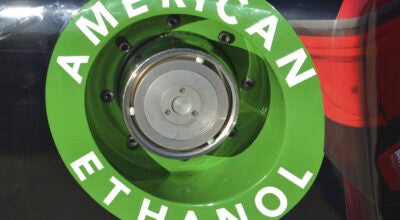Radon testing during home purchases declined nearly 40%
Published 8:00 pm Tuesday, January 3, 2023
|
Getting your Trinity Audio player ready...
|
The number of home radon tests completed during real estate sales in 2022 was down 39% from 2020, even though home sales did not decline, a new analysis from the Minnesota Department of Health shows. Reduced testing means fewer home buyers are identifying and reducing this cancer-causing hazard.
MDH analyzed professional radon testing data for 2020 to 2022 and found that in 2022 there were 19,976 real estate tests reported by professionals, which was lower than the 32,537 tests reported in 2020.
The colorless, odorless gas occurs naturally in Minnesota soils and is found at elevated levels in about 40% of all Minnesota homes. It is the leading cause of lung cancer among non-smokers. In fact, each year radon kills more than 21,000 people across the country. While there are ways to test for radon and fix it, many people are unaware of the risks.
tely, the radon risk is largely preventable by testing homes and reducing radon problems by installing radon reduction systems. Real estate transactions present an opportunity for home buyers to reduce their lung cancer risk. If the radon level is high, buyers could request that sellers install a radon mitigation system. During January, Radon Action Month, MDH is making a special push to urge everyone to test their home for radon, including when purchasing a property.
“Unfortunately, we have seen a decline in radon testing reported to us during home sales,” said Dan Tranter, supervisor of the MDH Indoor Air Program. “Radon professionals have also told us about a decline in their services. During the hot housing market in the last couple of years, some home buyers were skipping home inspections and radon tests.”
Health professionals recommend testing for radon during real-estate transactions. Sellers must disclose any prior radon testing and provide a two-page publication to buyers under state law. Radon tests should be incorporated into a home inspection. MDH licenses home inspectors and other professionals who test for radon.
“From 2018 through 2020 we experienced tremendous increase in radon testing,” said Doug Laurent with Homefax Radon Services, a Plymouth-based home inspection company. “However, in early 2021, the market conditions drove many buyers to forgo a home inspection and with it, radon testing. Buyers that waived their home inspections and radon tests are not following up with testing after they move in, at least not with a professional.”
The average radon level in Minnesota homes is about 4.2 picoCuries per Liter (pCi/L).
MDH recommends installing a radon mitigation system when the radon level is at 4 pCi/L or above. But you can’t know what the radon level in your home is unless you test, Tranter said.
Amanda Klecker of Healthy House on the Block, a White Bear Township home inspector and consultant, echoed the importance of testing. “Over the past few years, I’ve seen a steady decline in radon testing that is contingent on a home sale – many homeowners have been purchasing without even a home inspection in order to make their offer more competitive,” she said. “Thankfully, some realtors are highly knowledgeable about the harmful health effects of radon and have been encouraging their buyers to have the home tested after closing. While it’s unfortunate the testing isn’t being done prior to closing, buyers can still test after closing to ensure their home is safe for their family.”
This winter, MDH is partnering with local public health departments and other organizations to make test kits available to all Minnesotans at low or no cost. Participating agencies and vendors can be found on MDH’s Radon Testing website. Hardware stores may also stock test kits. Licensed professionals can also conduct testing.
Tests should be done in the lowest level of the home that is frequently occupied. Test devices are usually placed in the home for two to five days. The best time to test is during the heating season, but testing can be done year-round.
In homes with high radon levels, radon reduction typically involves installing a venting pipe and fan to pull the gas from under the home to the outside. Professionals conducting radon mitigation must be licensed by MDH, follow standards, and affix an MDH tag to the system. A list of licensed radon mitigation professionals can be found on the Find a Radon Mitigation Professional page on the MDH website.
MDH conducts free inspections of radon mitigation systems installed after June 1, 2020. The inspections ensure systems were installed correctly. Contact the MDH Indoor Air Unit to request an inspection at health.indoorair@state.mn.us.
More information about radon in Minnesota is available on the MDH website at Radon in Homes or by calling the MDH Indoor Air Unit at 651-201-4601 or 1-800-798-9050.




